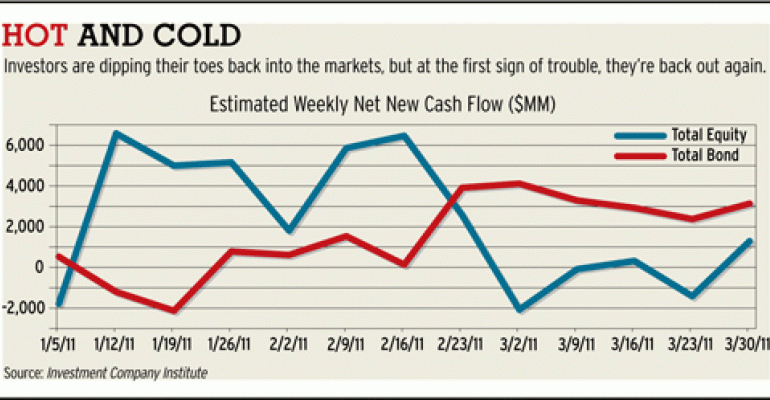During the first quarter, money flowed in and out of individual mutual fund asset classes faster than you could say, “volatility.” Investors just couldn't decide whether to hold 'em or fold 'em. For example, the flow data shows how quickly domestic equity came into positive net flows. The first week of January, U.S. equity funds saw an outflow of $4.2 billion, while the next week had net inflows of $3.76 billion. Then, at the end of February, equity funds pulled in $2.5 billion, followed the next week by negative flows, and by the end of March, equity flows were back up again. Meanwhile, outflows from municipal bond funds have been tapering off. It used to be that only institutional investors were tactical in this way, but this kind of cycling in and out of the market by retail investors has been happening at a much higher velocity than usual, says Matt Witkos, president of Eaton Vance Distributors. While the movements are characteristic of the current market environment, it also represents a long-term shift in the way people invest. Now, investors have the technology to get in and out of markets easily and quickly. Since the 2008 financial crisis, financial advisors have also become tactical in the way they invest clients' money, with less emphasis on buy-and-hold. Investors are more willing to take risks in the markets, but they're also much quicker to bolt for the exits at the first sign of choppy waters, says Witkos. Could this be another sign that buy-and-hold is dead?



